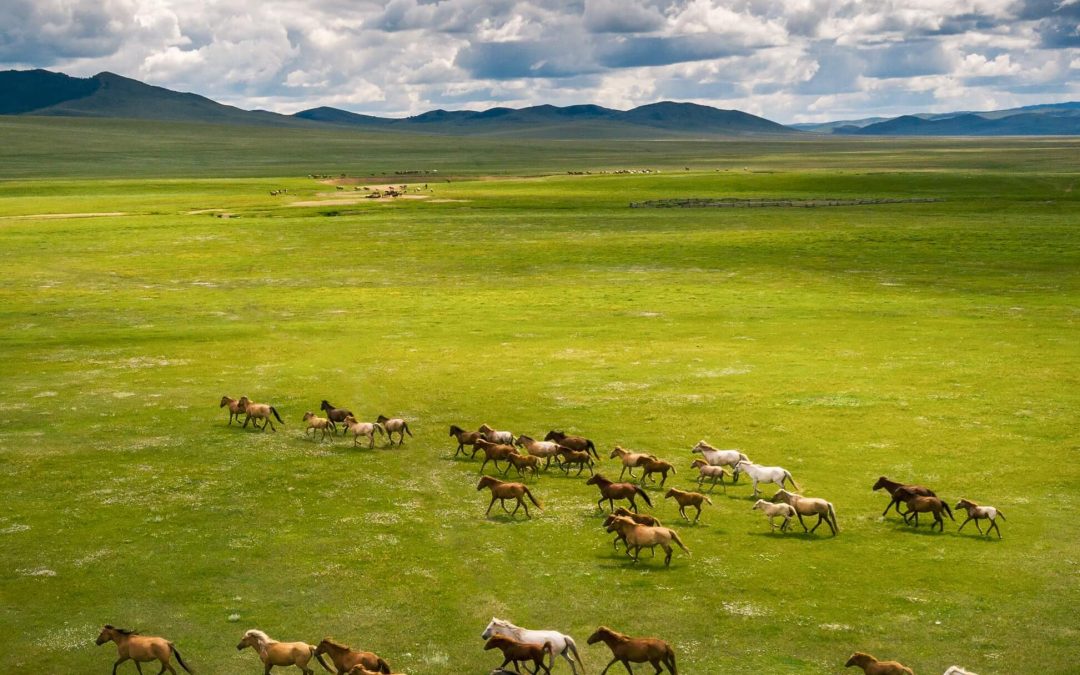Welcome to Min-On’s Music Journey! Today, the Min-On Concert Association and the Embassy of Mongolia in Japan welcome you to Mongolia, located in the western part of the Eurasian continent.
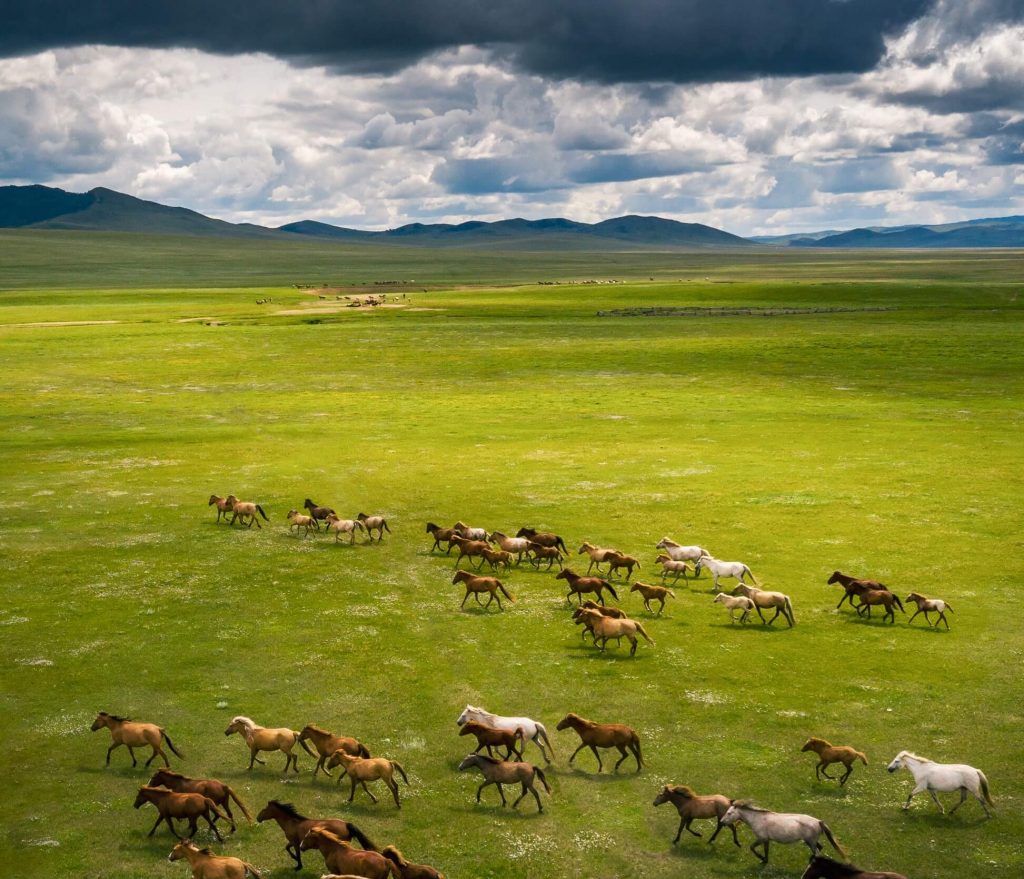
Mongolia is filled with sweeping grasslands that cover 80% of its vast land area. Due to an inland climate largely unaffected by the sea, there is a great temperature difference between day and night, and between summer and winter. In some regions, the winters get as cold as -40°C.
Mongolia is also sunny almost 300 days out of the year, making for a quite arid climate.
| Travel guide for Mongolia:
・Visit the sightseeing destinations on the outskirts of Ulaanbaatar |
Mongolia is Japan’s third-largest neighbor, and the two countries have built a strong partnership over the years. The year 2022 marks the 50th anniversary of diplomatic relations being established between them.
The capital of Ulaanbaatar, a matrix of traditional and modern
Ulaanbaatar is home to about half of Mongolia’s population and is the country’s political, economic and social center. Mongolia’s population is known for being young, with an age distribution of 42% under 24, 45% between 25 and 54, and 13% above 55 (as of 2020). Ulaanbaatar is a vibrant city home to many young people.
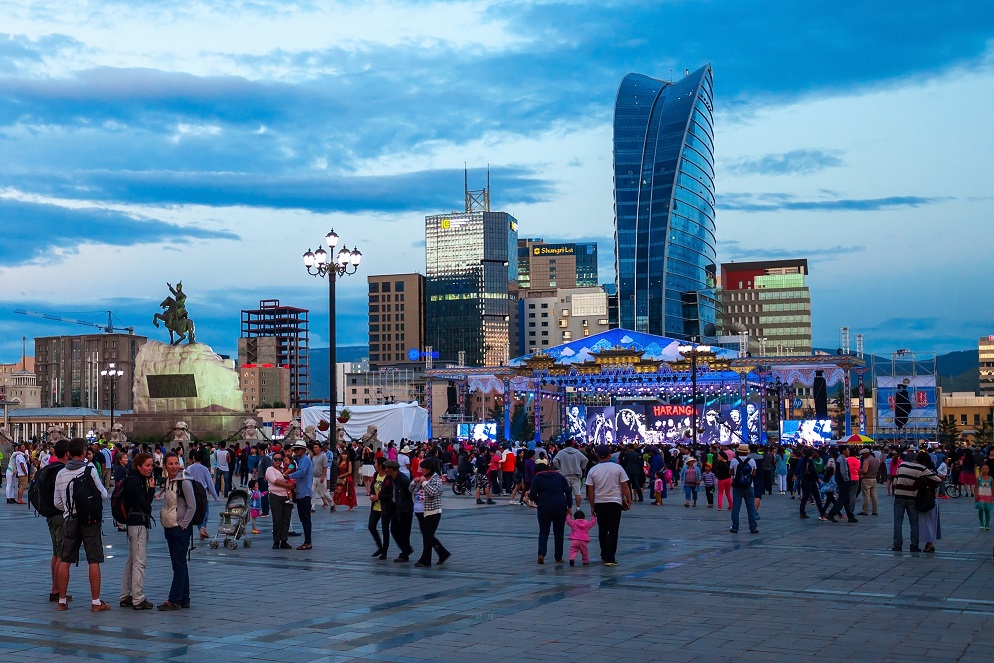
Including the Chinggis Khaan International Airport that opened in 2021, the city is filled with modern buildings like department stores, stylish cafes and boutiques.
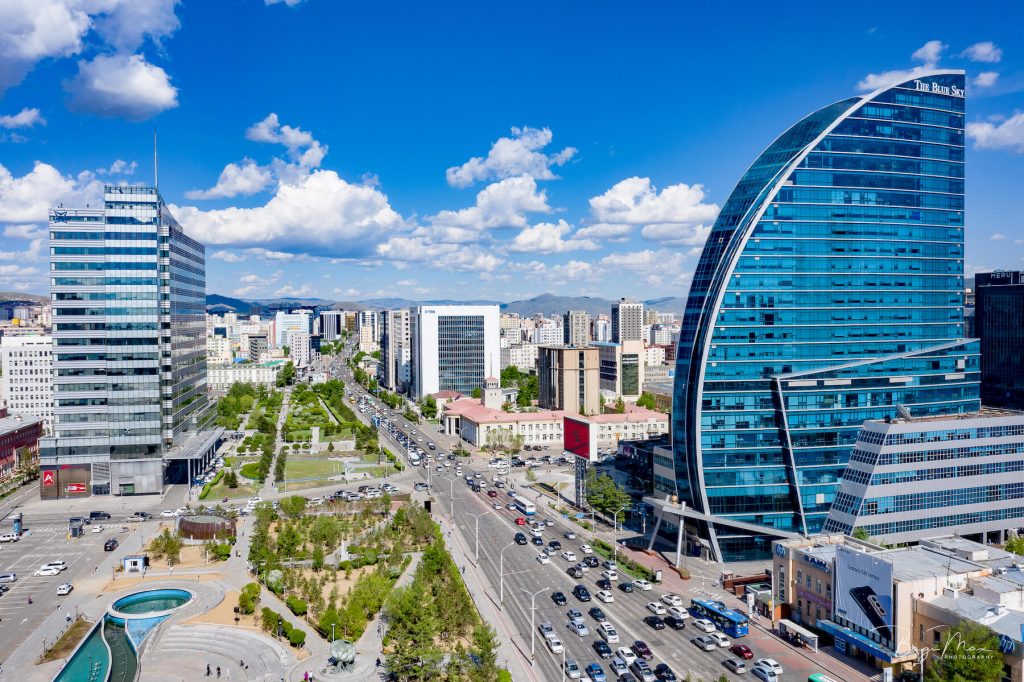
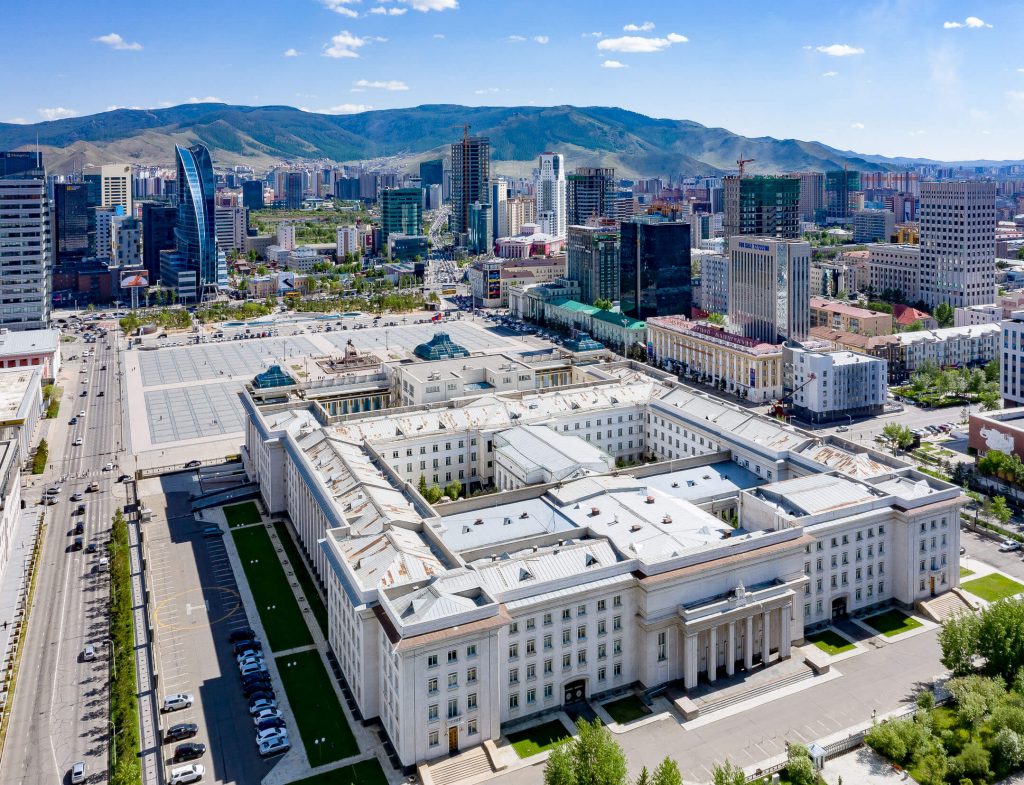
Government palace
At the same time, venturing off the main streets reveals many historic structures, including an ancient Tibetan Buddhist temple and the Palace Museum. This duality is one of the defining features of the city.

Gandan Monastery (left) and National Academic Theatre of Opera and Ballet (right)
Grand landscapes and World Heritage Sites
Mongolia’s vast area consists of four regions, each with their own personality. Let’s explore the World Heritage Sites and best-known natural scenery in each region.
The grassland region, with incredible starry skies
The grasslands in central Mongolia, which include the capital of Ulaanbaatar, feature a typical grasslands climate and consist of relatively flat land covered in short grasses, with very few hills or valleys. Take one step outside of Ulaanbaatar to be greeted by endless lush, green fields as far as the eye can see. At night, the full splendor of the starry sky stretches over the vast grasslands, thanks to the absence of any light pollution. This makes it a popular destination for visitors.
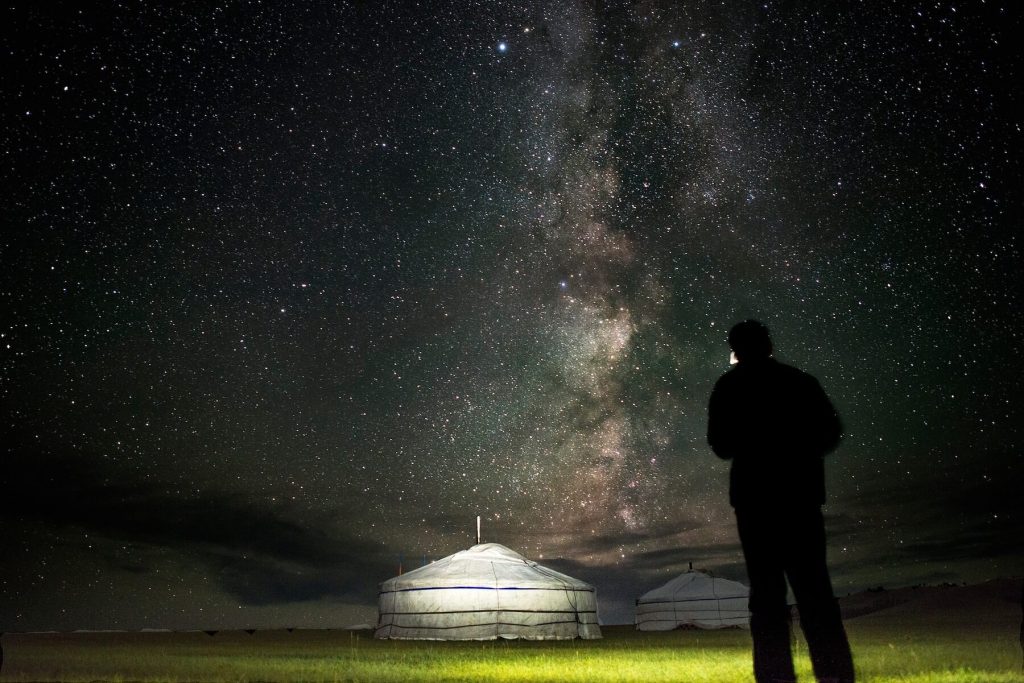
To the west of Ulaanbaatar lies the Orkhon Valley, registered by UNESCO as a World Heritage Site for its historic landmarks. Here, visitors can see historic structures representing the culture of the nomadic peoples built over the course of two millennia. One such location is the ruins of Karakorum, a city founded by Genghis Khan.
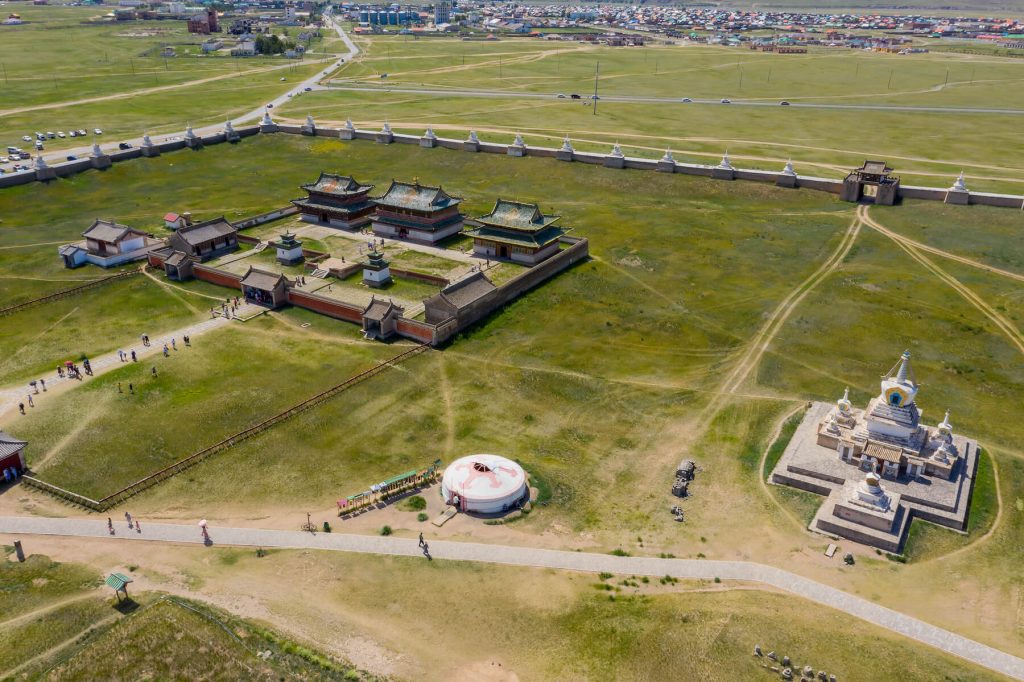
The taiga region, grazing land for reindeer
The northern region is blessed with plentiful rain, a rarity in Mongolia. This region is known for its unique environments not found in the other regions, such as Khuvsgul Lake, the second-clearest lake in the world, and Darkhad Valley, which is covered in permafrost. In the harsh cold of the taiga region, the Tsaatan nomadic tribe leads a unique lifestyle by keeping flocks of reindeer.
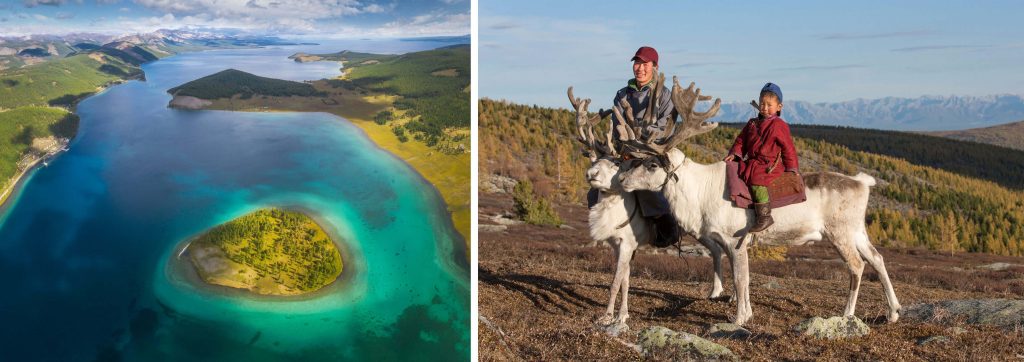 Khuvsgul Lake (left) and The Tsaatan (right)
Khuvsgul Lake (left) and The Tsaatan (right)
A mountainous region home to rare plants and animals
Western Mongolia is a mountainous region where the 4,000-meter peaks of the Altai Mountains tower over the landscape. The monumental presence of the mountains covered in perpetual snow and the Uvs Lake Basin, which extends into the neighboring country of Russia, are two sightseeing destinations that shouldn’t be missed.
The Uvs Lake Basin is a World Heritage Site that boasts Mongolia’s largest lake, Uvs Lake. The area’s unique natural environment includes both the world’s northernmost desert and its southernmost tundra. The basin is also home to rare mammals such as the endangered snow leopard and argali, a mountain sheep.
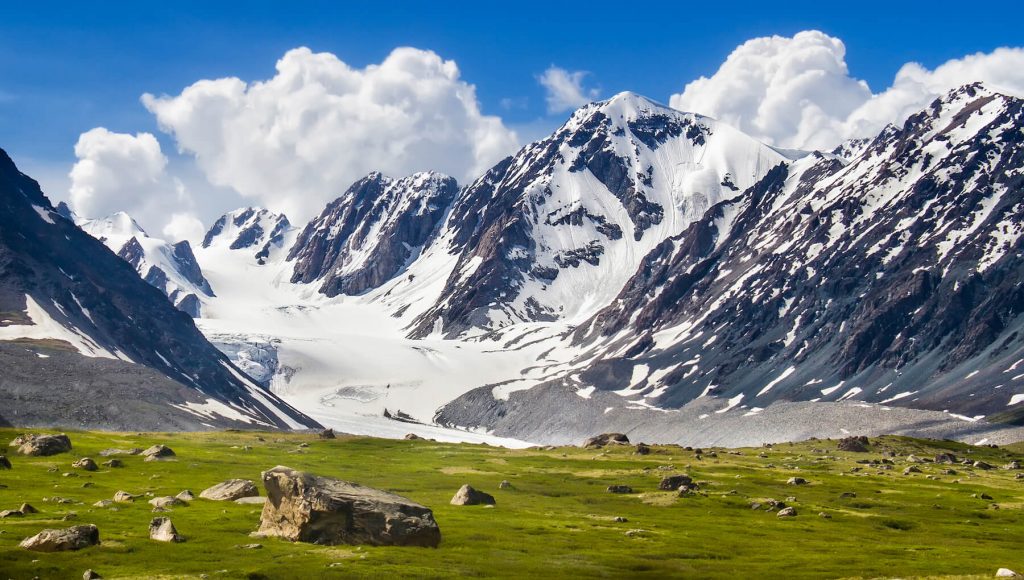
The vast arid land of the Gobi Desert
In southeastern Mongolia, a vast stretch of sand makes up the Gobi region. Because it’s also called the Gobi Desert, most people picture it as barren land, but patches of grass actually grow throughout the region, thanks to plentiful groundwater.
While the Gobi Desert isn’t suitable for growing grains or vegetables, the people here raise sheep and goats, which survive well in the arid climate. These nomadic people travel from place to place in search of grass to feed their livestock. However, when Mongolia became a democracy in 1992, it also enacted the Land Privatization Law, allowing people to freely choose where to live. As a result, in recent years more people are abandoning the nomadic lifestyle to move to cities like Ulaanbaatar.
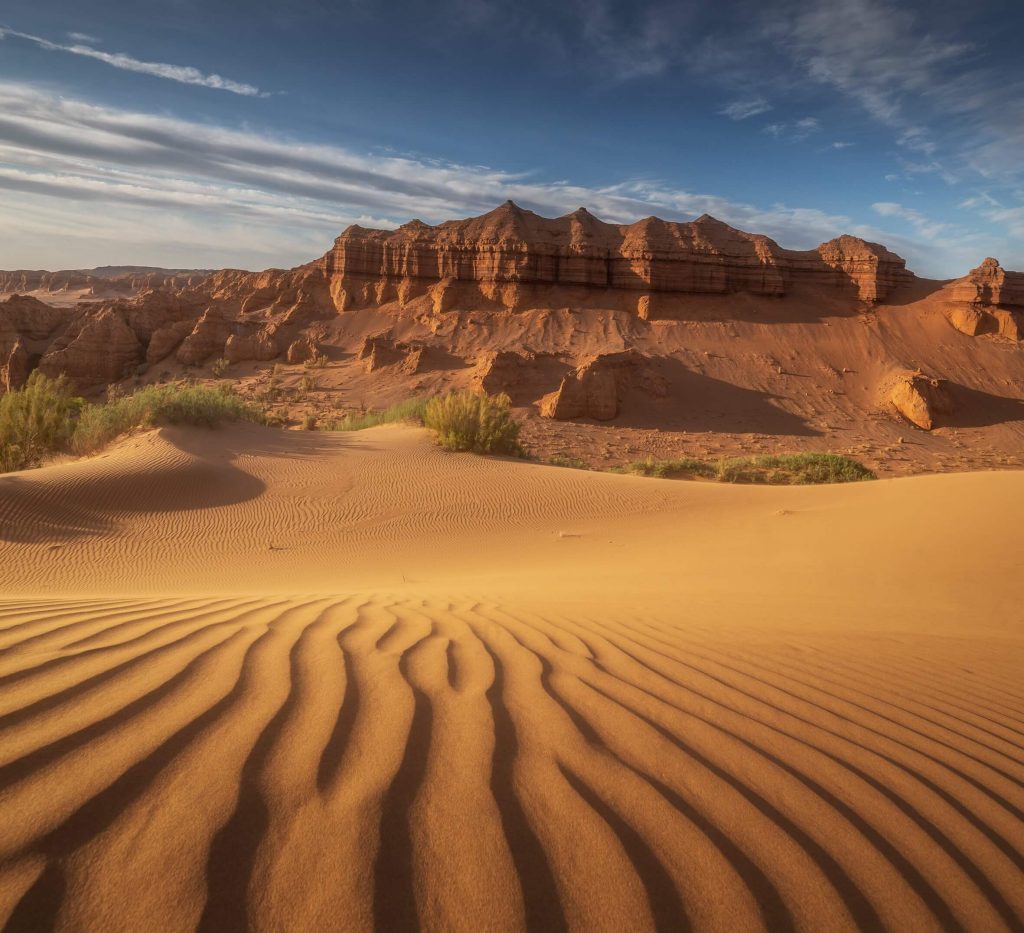
The traditional Mongolian lifestyle
It’s widely known that Mongolia has traditionally been inhabited by nomadic peoples. As mentioned, the number of people moving to cities is increasing, but the nomadic culture cultivated over the centuries still survives today.
The functional and comfortable ger
The ger, which is simple to build, disassemble, transport and repair, is the all-important Mongolian home that supports a nomadic lifestyle. Built out of wood and felt, ger are remarkably well-sealed to keep out the rain and wind, allowing the highly efficient homes to withstand the harsh Mongolian climate.

Horses and the nomadic lifestyle
As the saying “Mongolians grow up on horseback” indicates, horses are indispensable partners to the nomadic people and their way of life. Many tours in Mongolia feature a horse trekking option, allowing visitors to roam the vast prairies on horseback. Overnight stays in a ger are also very popular.
The deel, traditional Mongolian dress, is also optimized for horseback riding. The pants and sleeves are long to keep in warmth, but the pant legs are baggy to facilitate horseback riding.
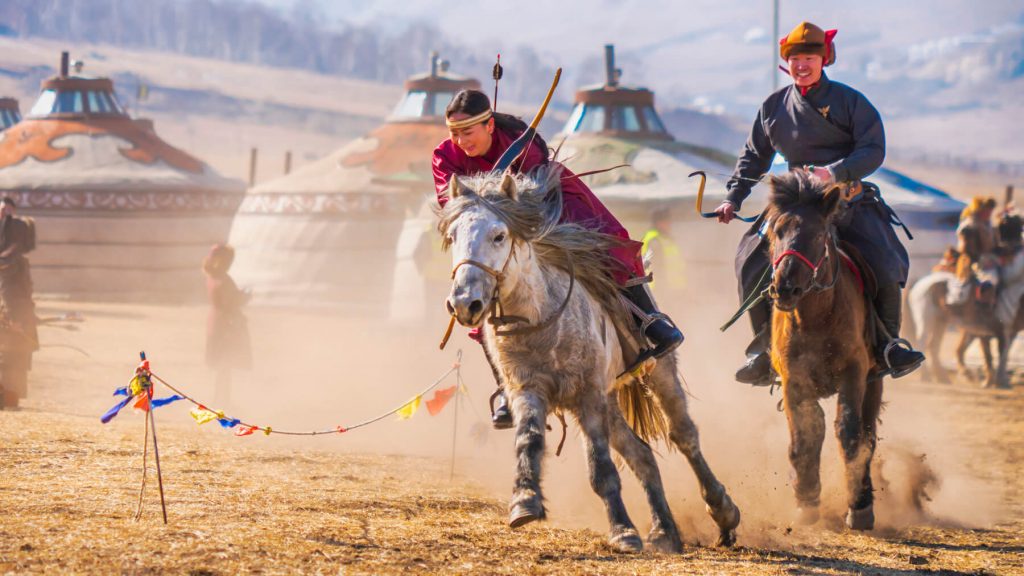
Naadam, the summer festival
Naadam is a sports festival held throughout Mongolia every year from mid-June to August. The word means “play” in Mongolian. The sports include what are traditionally called the “three games of men”: sumo, horse racing and archery.
Today, women also participate in the games (except for sumo), and the whole country gets fired up for the event every summer. Naadam is deeply meaningful for the Mongolian people, and it’s not rare to see parents shedding tears at how their children have grown as they watch them compete.

Proverbs linking the grandiosity of nature and the nomadic lifestyle
Mongolia’s traditional nomadic culture, where each individual faces stark decisions in everyday life, is said to be the root of the noble, powerful and individualistic values of its people. There are a number of proverbs that express the personality and sense of values of the Mongolian people:
・”If you do something, don’t be afraid; if you’re afraid, don’t do anything.”
・”Learn hardship, not dependence.”
・”During drought, know the splendor of spring; during hardship, know the friendship of summer.”
As you can see, these Mongolian proverbs offer straightforward expressions of how the Mongolian people approach nature, and how they see the facts of life.
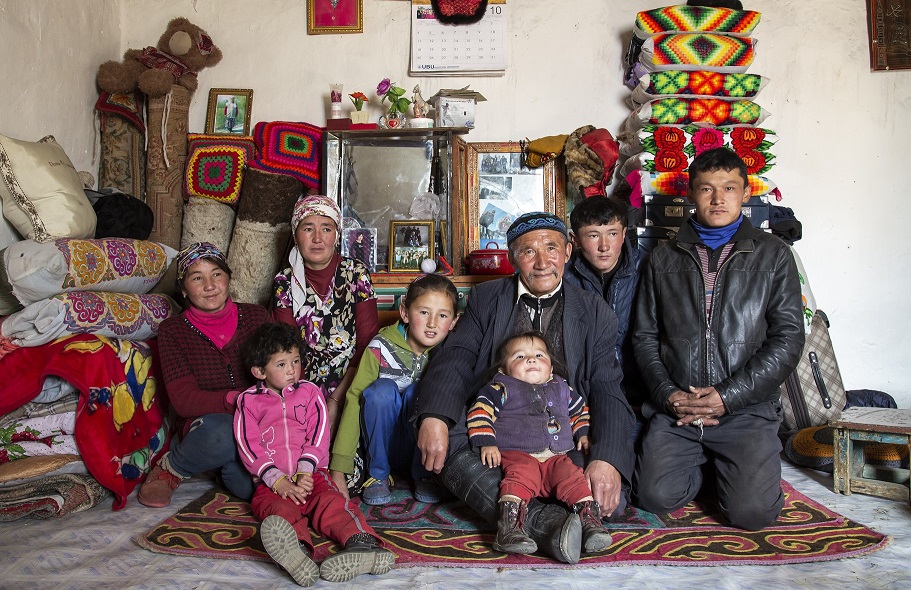
Mongolian musical culture

One feature of Mongolian music culture is a unique style of singing called khoomii, where a single person sings in two octaves at the same time. It was passed down among the many small ethnic groups living among the mountainous region of Central Asia, including Mongolia. The specific style passed down through the Mongolian tribes is called khoomii.
Min-On has continued cultural exchange with Mongolia ever since dispatching Min-On’s first research on music and dance on the Asian Continent in 1977 to Mongolia. Please enjoy listening to these two pieces expressing the magnificence of the Mongolian natural environment by The Mongolian National Song and Dance Ensemble with OYUNAA (singer) from their 2010 concert at Min-On.
- Pegasus
An iconic piece for the morin khuur expressing a horse galloping through the heavens.
- In Praise of the Altai Mountains
This song is sung as a hymn to the holy Altai Mountains during ceremonies and festivals. It reverently names all the animals, forests and rivers of the Altai Mountains, and during festivals, it is sung for three days and three nights without stopping.
Musician recommended by the Embassy of Mongolia in Japan
In closing, we would like to introduce musicians recommended by the Embassy of Mongolia in Japan.
- Yuve Yuve Yu-The HU
The HU
The HU is a rock band founded in Ulaanbaatar in 2016. The band’s name translates to the Mongolian root word for human being, and their unique approach blends instruments like the Morin Khuur (horsehead fiddle), Tovshuur (Mongolian guitar), Tumur Khuur (jaw harp) and throat singing withcontem porary sounds, creating a unique sonic profile that they call “Hunnu Rock.” They have performed in North America, Europe, Asia and other countries, and one of their most popular videos, “Yuve Yuve Yu,” has over 104 million views on YouTube. (as of December 2022).
- Two Mongolian folk songs, throat singing-Ikh Tatlaga
Ikh Tatlaga
Ikh Tatlaga is Mongolian folk instrument group based in Japan. They promote Mongolian culture and art to the world through performances of the Morin Khuur, khoomii, Yangqin and Yatga.
- Courtiers, vile damned race, Rigoletto-Amartuvshin Enkhbat
Amartuvshin Enkhbat
Amartuvshin Enkhbat is a Mongolian operatic baritone, and he has been a soloist in the National academic theatre of opera and ballet of Mongolia since 2008.
- Yeletsky’s aria (I Love You) from “The Queen of Spades,” Pyotr Tchaikovsky—Ariunbaatar Ganbaatar
Ariunbaatar Ganbaatar
Ariunbaatar Ganbaatar is a Mongolian operatic baritone and Mariinsky Theatre Guest Soloist. He has won many international awards, including first prize (Gold Medal) and the Grand Prix at the XV International Tchaikovsky Competition (Moscow – St Petersburg) in 2015.
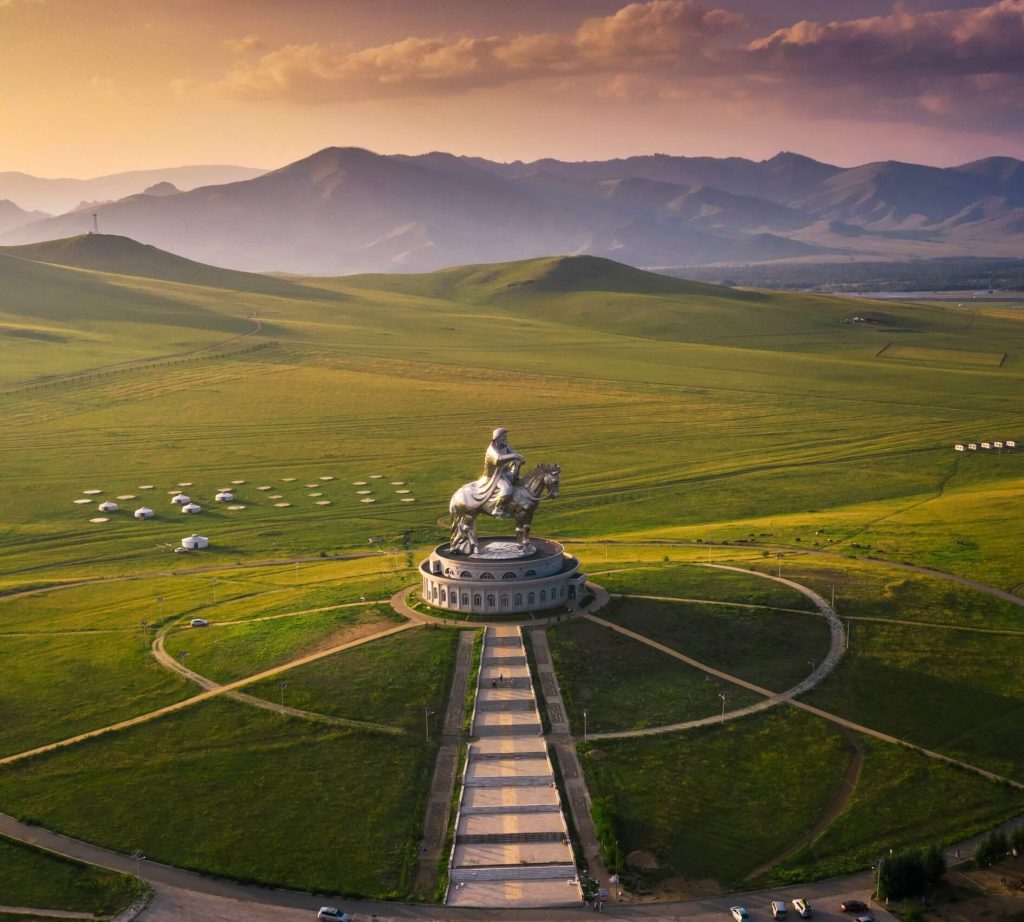
What did you think of your music journey to Mongolia? There are still many more places to go! Please look forward to our next destination.
(Produced in collaboration with the Embassy of Mongolia in Japan, who also provided photos.)
Min-On Concert Association
-Music Binds Our Hearts-


